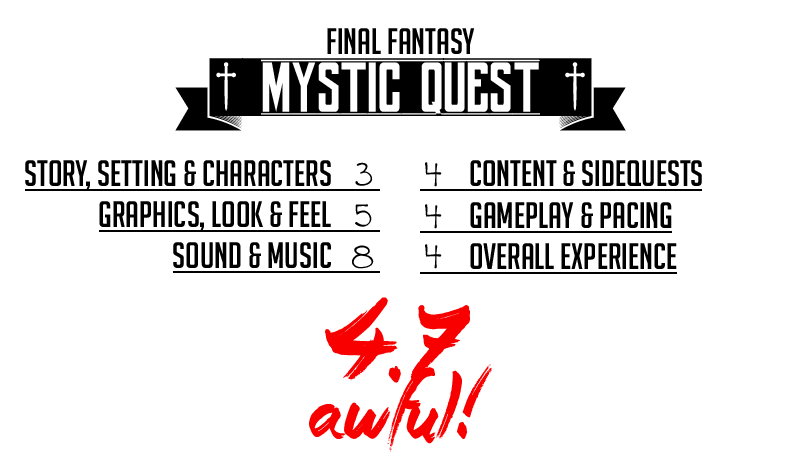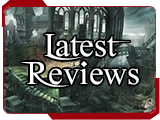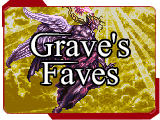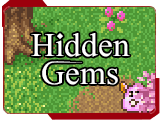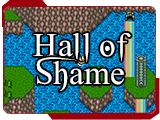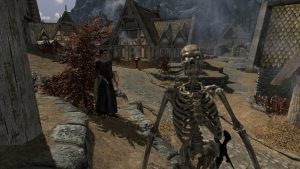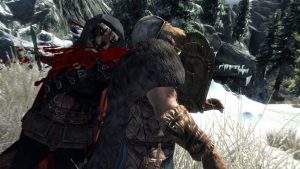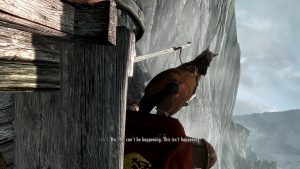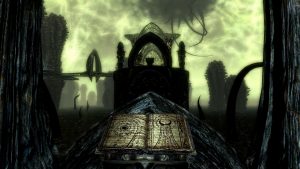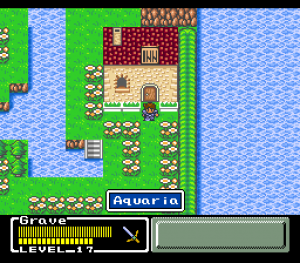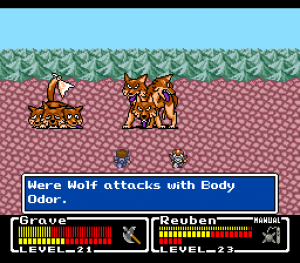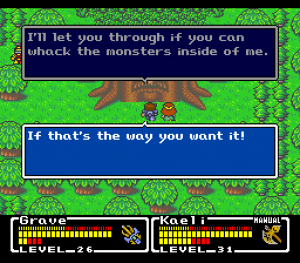Grave's RPG Reviews
Game Boy Advance · Nintendo 2DS/3DS · PC · PlayStation · PlayStation 3
PlayStation 4 · PlayStation Portable · PlayStation Vita · RPG Maker · SNES · Switch · Wii
WiiU · Xbox 360 · Xbox One
The Elder Scrolls V: Skyrim
Oh man, where to even start when trying to review what is likely my favourite game of all time? And for that matter, who hasn’t heard of Skyrim, one of the most successful and popular RPGs of all time? Originally released in 2011 (with the rather iconic release date of 11-11-11), Skyrim — the fifth entry in the long-running Elder Scrolls series — was such a massive success that it was re-released multiple times with various improvements, ported to additional platforms, and still sees a great deal of popularity even today — six years after it was first published.
Essential Information
This Review: PC/Windows (Special Edition, 2011)
Near-Identical Versions: PlayStation 3 (2011), Xbox 360 (2011), PlayStation 4 (2016), Xbox One (2016), Nintendo Switch (2017)
Game Length: 24-130 hours
Critic Rating: 93% aggregateThe aggregate critic rating is based on independent review scores from several other websites.
Grave’s Thoughts
As mentioned above, Skyrim is the fifth entry in the long-running and popular Elder Scrolls series — while the first couple of entries (Arena and Daggerfall) were decent yet hardly mainstream DOS games, the third and fourth games — Morrowind and Oblivion, both of which are worthy candidates for future reviews on this site — were hugely successful and popular, and helped The Elder Scrolls become a well-known name in the gaming world. Skyrim managed to surpass its predecessors and then some — but why is this game so damn popular?
Let’s step back a little and look at the big picture. The Elder Scrolls series are set in the high-fantasy land of Tamriel, and one of the biggest selling points of the series is its open world — from very early in each game, the player is free to do with the world as they wish, whether that be following the main story and completing quests, or simply venturing off and exploring, stealing, murdering — pretty much whatever they like. The world is truly your oyster in The Elder Scrolls, and Skyrim is no exception, giving the player free reign of around 37.1 km² (14.3 square miles) of landscape in the snowy northern lands of the titular land of Skyrim.
It’s pretty much exactly what you’d expect of a high-fantasy world — swords and sorcery abound, a land populated by the hardy men of the north along with a smattering of elves, Argonians (lizard people), Khajiit (cat people), and of course a plethora of monsters, undead, demons, and — naturally — dragons. This is the central core of Skyrim’s plot, in fact — the return of the dragons, a race thought to be extinct for thousands of years. Naturally, the player character has a destiny intricately bound to this plot — he or she is known as the Dragonborn, a mortal born with the power to absorb the souls of slain dragons and learn their ability to ‘shout’ words of mystical power. If you’ve played any previous Elder Scrolls game, you’ll know the drill here — you are the chosen one who will save the world from a great evil, and so on. It’s a bit of a tired and predictable plot, yet the open-world freedom of the game keeps things fresh and entertaining.
The freedom is one of the biggest things that sets Skyrim apart from other RPGs, providing a sort of single-player MMORPG experience, the world itself dynamically adjusting its difficulty level to match that of the player character, ensuring that you’re free to wander just about anywhere, and do just about anything you want, at any point in the game. You can charge off through the (not terribly lengthy) main story quest, join one of the several factions in the game (including the usual warrior, thief and mage guilds), or just strike out on your own and wander into the wilderness, plundering dungeons and defeating bandits and the undead. The choice is yours, and the sheer amount of freedom and flexibility offered by the game is refreshing, as well as incredibly addictive. It’s easy to lose yourself entirely in Skyrim for hours at a time, forgetting that the real world exists at all.
The sense of freedom also applies to the game’s skill system — rather than choosing a class at the start of the game, you simply start off life as a generic adventurer. Any skills you use — for example, wielding a battleaxe will increase your two-handed weapon skill, or casting various spells will increase your aptitude in that field of magic — will increase over time, and after enough skills improve, you can level up and invest a perk point into one of numerous skill trees — one for each skill in the game. This way, you can choose to specialize, to mix and match a few different skills, or simply be a jack of all trades and advance your character in whatever direction seems fun at the time. There’s a strong overlying feeling of “the choice is yours” to almost every aspect of the gameplay, even down to how you approach obstacles in the world — do you charge into the bandit-infested tower with heavy armour and a greatsword, or maybe take the stealthy approach, sniping individual bandits from afar with your bow? Perhaps raise corpses to fight in your stead, letting each slain foe add to your undying legion?
As if that wasn’t enough, we come now to the greatest strength of Skyrim, and likely one of the major reasons why it became so popular: modding. The game fully supports player-made mods, and at the time of writing, there are literally tens of thousands of different mods available for the game, allowing you to customize and extend the world in ways that you may have never thought possible. Everything from gameplay overhauls to DLC-sized expansion packs are available, most for free, and allow the freedom to customize an already incredible game into something that perfectly suits your own style of gameplay. Graphics overhauls can make Skyrim rival games released this year in terms of visuals, fans of magic will be delighted by the plethora of extra spells made available by fans, and the list goes on, and on. In lieu of rambling too much on the subject, I’ll list some of my personal favourite mods below.
Overall, Skyrim is an experience like no other — a massive open world where the player has the freedom to be whatever they want, and do whatever they want, be it good or evil — or maybe somewhere in between. It’s a world you can truly lose yourself in, and with the huge amount of mods available from the community, it’s a game that will never be the same twice.
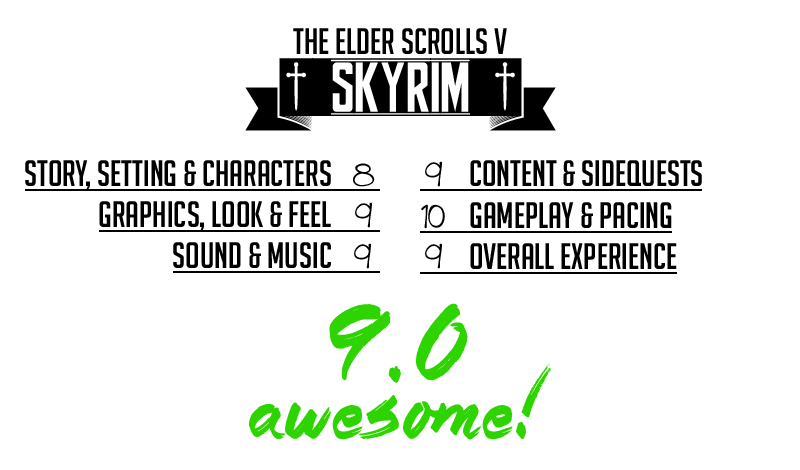
Recommended Mods
There are so many amazing mods for Skyrim, it’s impossible to really know where to start — but here’s a few of my absolute favourites. Bear in mind that mods made for the original Skyrim may not be compatible with Skyrim Special Edition, and vice-versa, though many have been ported to both games. The links below are for the Special Edition (SSE) and the Legendary Edition (SLE).
Unofficial Skyrim Special Edition Patch (SSE) / Unofficial Skyrim Legendary Edition Patch (SLE) — These are must-have mods which contain an absolute host of community-made bug-fixes for the game, correcting a staggering amount of mistakes Bethesda never officially fixed.
Alternate Start: Live Another Life (SSE / SLE) — Tired of always starting the game as a prisoner in a wagon, having to sit through the same long scripted sequence every time? No longer! Now you can start as a hunter in the wilds, a necromancer in a secret lair, a bandit in a den of thieves, or one of plenty of other alternate starting points to the game.
Frostfall (SSE / SLE) & Campfire (SSE / SLE) — Feel like adding some realism to your game? Frostfall and Campfire make the cold and snowy landscape of Skyrim into the perilous land it truly is, a place where the unwary could freeze to death in the icy wastes. If survival mods are your thing, these are the absolute kings of Skyrim survival.
Ordinator: Perks of Skyrim (SSE / SLE) — The vanilla perks system is excellent, but Ordinator takes a great system and turns it into something incredible. This mod allows for an unprecedented levle of flexibility when it comes to building a character, with everything from a fully-featured unarmed combat tree to various forms of necromancy, spellswords, rangers, and even bard abilities.
Apocalypse: Magic of Skyrim (SSE / SLE) — The essential spells pack for Skyrim, adding over 150 new spells to give a massive amount of new gameplay options both to dedicated magic-users and those who just use a spell or two on the side.
Imperious: Races of Skyrim (SSE / SLE), Aurora: Standing Stones of Skyrim (SSE / SLE), Thunderchild: Epic Shouts and Immersion (SSE / SLE), Sacrosanct: Vampires of Skyrim (SSE / SLE), Summermyst: Enchantments of Skyrim (SSE) / Wintermyst: Enchantments of Skyrim (SLE) — A number of other mods from the same author as Ordinator and Apocalypse, overhauling and extending other elements of the game with the same level of excellence.
SkyUI (SSE / SLE) — Primarily of relevance to PC players, SkyUI overhauls the interface (especially the inventory) into a much less “console-ized” and much more PC-friendly layout, as well as being a framework that many, many other mods rely upon.
Grave's RPG Reviews
Game Boy Advance · Nintendo 2DS/3DS · PC · PlayStation · PlayStation 3
PlayStation 4 · PlayStation Portable · PlayStation Vita · RPG Maker · SNES · Switch · Wii
WiiU · Xbox 360 · Xbox One
Eternal Destiny
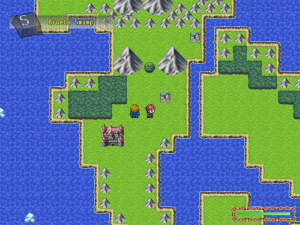 I make bad decisions a lot in my life; I’ve electrocuted myself (unintentionally) at least once, almost blinded myself with battery acid (unintentionally), and then there was that one incident with the potato salad that still haunts me to this day. Among this series of bad decisions was a whimsical idea to include reviews of RPG Maker games to the site, since they are not only numerous and varied, but also very difficult to actually tell the wheat from the chaff without investing a great deal of time wading through bucketloads of the things.
I make bad decisions a lot in my life; I’ve electrocuted myself (unintentionally) at least once, almost blinded myself with battery acid (unintentionally), and then there was that one incident with the potato salad that still haunts me to this day. Among this series of bad decisions was a whimsical idea to include reviews of RPG Maker games to the site, since they are not only numerous and varied, but also very difficult to actually tell the wheat from the chaff without investing a great deal of time wading through bucketloads of the things.
Behold, your new hero: I stand ready to dig through the mountains of garbage, looking for the few diamonds hidden in the acres of rough. To begin with, I picked a game entirely at random with no real thought behind my decision, settling on Eternal Destiny.
Essential Information
Available On: RPG Maker (PC) (2011)
Author: Rose_Guardian
RPG Maker Version: RPG Maker VX Ace
Game Length: <1 hour
Download Link rpgmaker.net
Grave’s Thoughts
The regrets began almost immediately.
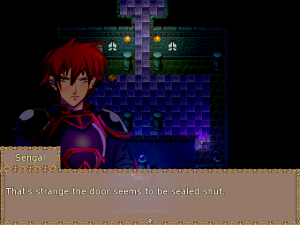 I’ll cover the good parts first: The game begins in a fairly dank and sinister-looking shrine, where our two heroes have been sent to investigate some strange goings-on. While the map design is fairly lackluster, the lighting effects are fairly attractive and add a nice, brooding atmosphere to the area. The combat system is mercifully revamped from the RPG Maker defaults, with a fairly pleasant though unremarkable side-view battle system. The character art, while not the best I’ve ever seen, at least seems to be original and an effort has been made, which is certainly welcome for an RPG Maker game. There’s also a quest system, including side-quests, which tracks the progress of quests in a novel and convenient way.
I’ll cover the good parts first: The game begins in a fairly dank and sinister-looking shrine, where our two heroes have been sent to investigate some strange goings-on. While the map design is fairly lackluster, the lighting effects are fairly attractive and add a nice, brooding atmosphere to the area. The combat system is mercifully revamped from the RPG Maker defaults, with a fairly pleasant though unremarkable side-view battle system. The character art, while not the best I’ve ever seen, at least seems to be original and an effort has been made, which is certainly welcome for an RPG Maker game. There’s also a quest system, including side-quests, which tracks the progress of quests in a novel and convenient way.
Okay, so that’s the good. And now… deep breath…
I mentioned the dungeon layout was lackluster; while some effort was made for the initial (very small) dungeon, the rest of the game is far more lacking — the towns are about as awkwardly blocky and dull as one might expect from a zero-budget game, the forest area is several screens of what looks like grass with handfuls of bushes and small trees farted randomly onto them, and — perhaps the most egregious of all — it’s impossible to leave the weapon shop in the second town after entering, because there isn’t an exit door. Yep.
The writing is best described as poor, yet passable — the amount of spelling errors (including menu entries such as “wreapon”) is horrendous, the dialogue is awkwardly stilted and reads like a bad fanfiction, and the story — what little exists of it — is as thin and unremarkable as supermarket own-brand tissue paper, the entirety of which seems to boil down to being the errand boys for meaningless tasks issued by the queen.
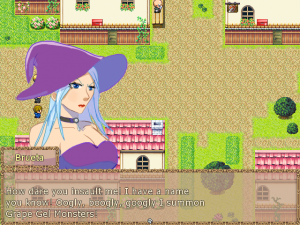 The gameplay is a mixed bag — the side-view battle system is fairly competent, yet the battles themselves are all over the shop in terms of difficulty. The game actually offers a set of six difficulty options at the beginning — ranging from Very Easy to Very Hard, natch — and while this does affect the stats of enemies, the balance still seems far off. A couple of the boss fights were nigh-impossible on Normal, while even on Very Easy, many random-encounter enemies are damage sponges able to take almost as much abuse as I’m dishing out right now. Boss battles were a tedious slog and tended to end up being a case of the ‘swordmaster’ Sergal — sorry, Sengal — being the heal-bitch, while the warrior Balagan beats faces to a relentless pulp with his axe.
The gameplay is a mixed bag — the side-view battle system is fairly competent, yet the battles themselves are all over the shop in terms of difficulty. The game actually offers a set of six difficulty options at the beginning — ranging from Very Easy to Very Hard, natch — and while this does affect the stats of enemies, the balance still seems far off. A couple of the boss fights were nigh-impossible on Normal, while even on Very Easy, many random-encounter enemies are damage sponges able to take almost as much abuse as I’m dishing out right now. Boss battles were a tedious slog and tended to end up being a case of the ‘swordmaster’ Sergal — sorry, Sengal — being the heal-bitch, while the warrior Balagan beats faces to a relentless pulp with his axe.
One major complaint I had — despite the game’s short length — is being railroaded with no free will. Upon arriving in the second town and asking around for Brueta Swamp, the game immediately kicks the player into a dialogue and boss battle with no warning. Once the battle is over, we’re suddenly pushed onto a ship and sent across the ocean to… well, to nothing, because that’s where the game ends. But it’d be nice to at least have the option to go back and hand in side-quests or get hopelessly trapped inside the weapon shop, rather than being forced to move on despite there being no real urgency in the story to justify such a rush.
Overall, I feel this is a game which could have potential, but the seemingly rushed approach, lack of proper testing, and generally sloppy construction drag it down pretty hard. Apparently, this ‘demo’ has been abandoned in favour of remaking the game in the newer RPG Maker MV, so perhaps some hope exists for its future.
But I wouldn’t hold my breath.
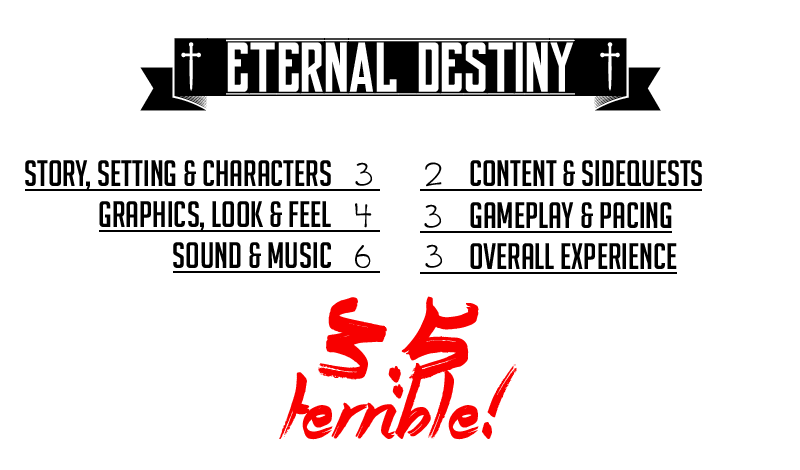
Grave's RPG Reviews
Game Boy Advance · Nintendo 2DS/3DS · PC · PlayStation · PlayStation 3
PlayStation 4 · PlayStation Portable · PlayStation Vita · RPG Maker · SNES · Switch · Wii
WiiU · Xbox 360 · Xbox One
Xenogears
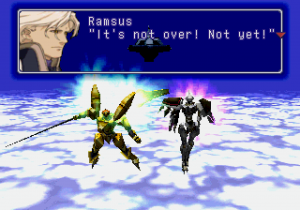 It’s honestly difficult knowing where to even begin with a review of a game of this magnitude. Originally released in 1998, hot on the heels of the more famous Final Fantasy VII, Xenogears is nothing like its cousin despite both being made by the RPG giant Square. The most important two things to bear in mind about this game are the following: the plot is dense and complex enough that it could easily have been a standalone anime series the likes of Gundam, but despite this, the pacing is so atrociously bad, the real meat and bones of the story don’t open up until the last quarter or so of the game. Xenogears is a game that demands patience and pays it back in spades, but may seem disappointing to those who don’t give it the story proper time to bloom.
It’s honestly difficult knowing where to even begin with a review of a game of this magnitude. Originally released in 1998, hot on the heels of the more famous Final Fantasy VII, Xenogears is nothing like its cousin despite both being made by the RPG giant Square. The most important two things to bear in mind about this game are the following: the plot is dense and complex enough that it could easily have been a standalone anime series the likes of Gundam, but despite this, the pacing is so atrociously bad, the real meat and bones of the story don’t open up until the last quarter or so of the game. Xenogears is a game that demands patience and pays it back in spades, but may seem disappointing to those who don’t give it the story proper time to bloom.
Essential Information
This Review: PlayStation (1998)
Near-Identical Versions: PlayStation 3 (2008), PlayStation Portable (2008), PlayStation Vita (2012)
Game Length: 55-65 hours
Critic Rating: 88% aggregateThe aggregate critic rating is based on independent review scores from several other websites.
Grave’s Thoughts
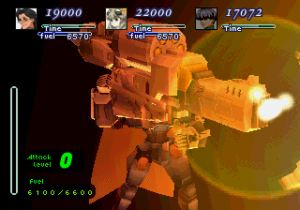 I’ve been a massive fan of RPGs — JRPGs in particular — since the days when the Super Nintendo reigned supreme. My appetite for RPGs was best described as voracious, and the advent of the PlayStation and its fantastic array of now-classic JRPGs was like a cornucopia. Unfortunately, living in the UK, I was stuck with the European market for RPGs — which is to say, despite being an English-speaking country, we’d only ever see games that had also been translated into French, German, Italian, etc. for the European market. A fair handful of RPGs never got translated outside of Japan and America and thus were never released in the UK, despite there being little good reason why we couldn’t be allowed the American versions of the games. Xenogears was one of these, and for the longest time I had a bitter resentment towards Square for never just allowing us Brits the opportunity to play the game which had already been translated into English for the Americas.
I’ve been a massive fan of RPGs — JRPGs in particular — since the days when the Super Nintendo reigned supreme. My appetite for RPGs was best described as voracious, and the advent of the PlayStation and its fantastic array of now-classic JRPGs was like a cornucopia. Unfortunately, living in the UK, I was stuck with the European market for RPGs — which is to say, despite being an English-speaking country, we’d only ever see games that had also been translated into French, German, Italian, etc. for the European market. A fair handful of RPGs never got translated outside of Japan and America and thus were never released in the UK, despite there being little good reason why we couldn’t be allowed the American versions of the games. Xenogears was one of these, and for the longest time I had a bitter resentment towards Square for never just allowing us Brits the opportunity to play the game which had already been translated into English for the Americas.
In retrospect, it’s probably a good thing that I didn’t get to play through the game fully until more recently — largely because the game’s story is so complex and multi-layered that I doubt I’d have been able to properly appreciate it as a kid. This is a game which rivals many anime series in terms of sheer complexity of plot, which I can best describe as a mix of mecha anime sci-fi, theoretical physics, Jungian psychology, and religious mysticism — all of which somehow manages to tie together and make perfect sense in the story. Unfortunately, one of the game’s most major flaws shows its face here: the pacing is absolutely terrible, and trying to get to the meat of the plot is like eating a pie with the most delightful filling, but a crust that just keeps going and going.
Another flaw of the game is that it feels unfinished in parts — the combat system is clunky and offputting at first, though later seems fairly simple and lacking in depth, and while the game’s complex and flavourful story really comes into bloom after the first forty or so hours, the sheer amount of slower-paced setup can seem offputting and boring. I’d wager there’s a great many gamers out there who never even got to the real core of the game, thanks to the glacial pace of the early-game plot. Unfortunately, the latter portion of the game is much the opposite — while the many, many mystery threads of the story are tied up and explained in the end — including the exciting opening cutscene, which actually seems to have no connection to the game whatsoever until close to the end — due to time constraints during development, large portions of the second disc had to be cut from the game entirely, replaced by scenes describing the events that the player would have taken part in.
 That’s the bad, so let’s take a look at the good — this is a fairly lengthy JRPG with an incredibly original and complex story, blending together both science and religion, along with some of the most original world-building I’ve ever seen in an RPG, albeit most of which is merely hinted at until the plot unravels in the late game. Both in its look and feel, it seems to be trying hard — and largely succeeds — to emulate the style of a mecha anime, helped especially by a handful of fully-animated, anime cutscenes. The characters (and villains) all manage to largely avoid the usual stereotypes and are fairly complex and original, all having their own varied goals and desires, even though in some cases this leads to ruin.
That’s the bad, so let’s take a look at the good — this is a fairly lengthy JRPG with an incredibly original and complex story, blending together both science and religion, along with some of the most original world-building I’ve ever seen in an RPG, albeit most of which is merely hinted at until the plot unravels in the late game. Both in its look and feel, it seems to be trying hard — and largely succeeds — to emulate the style of a mecha anime, helped especially by a handful of fully-animated, anime cutscenes. The characters (and villains) all manage to largely avoid the usual stereotypes and are fairly complex and original, all having their own varied goals and desires, even though in some cases this leads to ruin.
It’s almost impossible to describe the story without delving into spoilers, so I’ll just say that while things start fairly slow — with the oft-used trope of a tranquil country village and a protagonist with a mysterious past and a lost memory — it isn’t long until the shit hits the proverbial fan, and the reluctant hero Fei is forced into a conflict he barely understands and wants nothing to do with, even though it seems as though everyone else knows far more than they’re letting on. It’s a tale of mecha, ancient religions, politics, and a huge mystery to slowly unravel — albeit one that is mostly still a tangled mass of obscurity until the closing hours of the game.
The visuals are for the most part excellent, though due to the limitations of the PlayStation’s hardware and the game’s reliance on rendering everything in three-dimensional polygons (no pre-rendered backgrounds here), it’s not quite as visually impressive as it could have been on more capable hardware (or if tricks such as pre-rendered backgrounds were used, as seen in the PlayStation Final Fantasy games), and it feels as though the designers tried to do too much, hindered too heavily by the implementation. The only exception to this rule are the character models, rendered as strangely-scaled two-dimensional sprites, though the somewhat jarring effect is easy to forget after playing the game for a while.
Despite its niggling flaws, however — many of which I fear are the reason Xenogears isn’t nearly as well-known as it could be — it’s a mostly solid experience which is ready to richly reward any with the patience to slog through the laggard pace of the early game. If the opening cutscene and the idea of a mecha-based, anime-style RPG are intriguing, then by all means, find yourself a copy and give it a try — if you can forgive its flaws and missteps, this may very well be a game you’ll come to love.
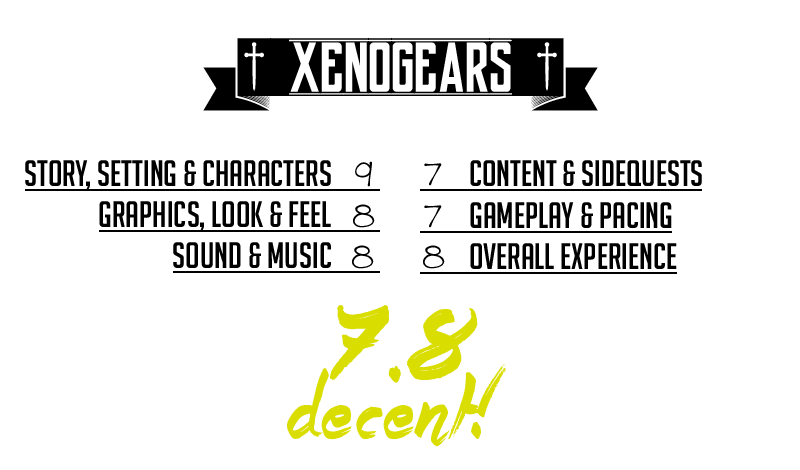
Grave's RPG Reviews
Game Boy Advance · Nintendo 2DS/3DS · PC · PlayStation · PlayStation 3
PlayStation 4 · PlayStation Portable · PlayStation Vita · RPG Maker · SNES · Switch · Wii
WiiU · Xbox 360 · Xbox One
Final Fantasy VII
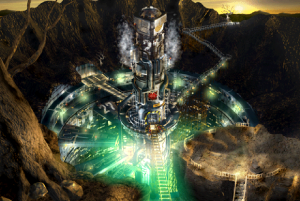 Love it or hate it, it’s impossible to deny the place Final Fantasy VII has in RPG history. With its impressive visuals, slick gameplay, immersive story and fantastic soundtrack by the legend himself, Nobuo Uematsu, it played a huge part in popularizing the JRPG genre in the West. It’s hard to imagine there are any JRPG fans who haven’t heard of this game before, but for the sake of completion, it deserves a place in this humble review blog. So with no further ado, does Final Fantasy VII live up to the hype? Let’s find out!
Love it or hate it, it’s impossible to deny the place Final Fantasy VII has in RPG history. With its impressive visuals, slick gameplay, immersive story and fantastic soundtrack by the legend himself, Nobuo Uematsu, it played a huge part in popularizing the JRPG genre in the West. It’s hard to imagine there are any JRPG fans who haven’t heard of this game before, but for the sake of completion, it deserves a place in this humble review blog. So with no further ado, does Final Fantasy VII live up to the hype? Let’s find out!
Essential Information
This Review: PlayStation (1997)
Near-Identical Versions: PC (1998), PlayStation 3 (2009), PlayStation Portable (2009), PlayStation Vita (2012), PlayStation 4 (2015)
Game Length: 40-60 hours
Critic Rating: 94% aggregateThe aggregate critic rating is based on independent review scores from several other websites.
Grave’s Thoughts
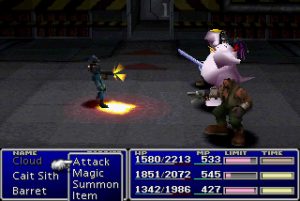 Cast your mind back to the late 90s — bad music, worse fashion, and the internet as we know it today was still in its infancy. Picture a younger, more innocent and less cynical version of myself — terrifying, I know — an RPG fanatic, I’d not long since cut my teeth on The Legend of Zelda: A Link to the Past and I was hungry for more, devouring whatever RPG faire I could get my grubby hands on. I didn’t know what was good or what was bad — I willingly put money down for a copy of Drakkhen, for example. One of my pastimes was scurrying on down to the local used games shop in the market, a place filled with lingering stale cigarette smoke and irrevocable wonder, and badgering the beleaguered owner with my requests for RPGs.
Cast your mind back to the late 90s — bad music, worse fashion, and the internet as we know it today was still in its infancy. Picture a younger, more innocent and less cynical version of myself — terrifying, I know — an RPG fanatic, I’d not long since cut my teeth on The Legend of Zelda: A Link to the Past and I was hungry for more, devouring whatever RPG faire I could get my grubby hands on. I didn’t know what was good or what was bad — I willingly put money down for a copy of Drakkhen, for example. One of my pastimes was scurrying on down to the local used games shop in the market, a place filled with lingering stale cigarette smoke and irrevocable wonder, and badgering the beleaguered owner with my requests for RPGs.
I didn’t care what it was, I was like a prisoner who’d grown up eating bread and water and never knew the impossibly diverse rainbow of food existed. I’d chew through atrocities such as The Immortal and classics like Secret of Mana with equal fervour, and without fail, my pocket money would be slapped down upon the counter of that dingy little shop as I’d once again clumsily enunciate a request for any new RPGs that Dave — dingy market shops are always run by someone called Dave — had in stock.
On one such fateful day, someone had sold their copy of Final Fantasy VII — an original, no less, not the Platinum re-release that most folks have in their dust-gathering collections today. Despite having never heard of the Final Fantasy series — this was back when my internet connection was limited to brief spurts of low-speed browsing at the local library — I was immediately intrigued. The box art was like nothing I had seen before, and the rear of the box spoke of an adventure the likes of which I’d never seen. Of course, it had to be mine.
From the moment I slapped the disc in my console and started playing, I was hooked. The stunning opening cutscene blew my socks off so hard they left permanent holes in the wall. The graphics, the music, the… everything! Thus began a whirlwind adventure into a world I previously knew nothing about, a game which — at the time — was completely new and unheard of to me. I followed Cloud’s adventure with rapt attention, I was in awe of the infamous villain Sephiroth, I was terrified of the monstrous Jenova, and as the story unfolded and expanded into deeper layers than I’d ever before seen in an RPG, I was dumbstruck. Every gamer can tell you the tale of the one game that really changed it all for them, that one moment that shaped their gaming hobby forever — and for me, this was it.
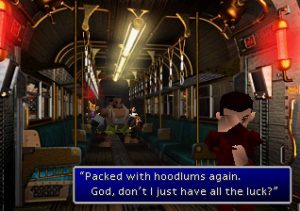 But enough reminiscing — let’s get into the meat and bones of the matter. While some may consider the game over-hyped — largely, I suspect, due to the folks like myself for whom this was their first taste of a Final Fantasy game — even by today’s standards, this game is still worthy of its legendary standing. While the graphics haven’t aged as well as some other games of its era (particularly the rather blocky character models seen outside of combat), the soundtrack is still one of the finest in RPG history, the visuals — if you can forgive the dated graphics engine — are flashy and memorable, with pre-rendered backgrounds full of intricate detail, and the gameplay is absolutely top-notch.
But enough reminiscing — let’s get into the meat and bones of the matter. While some may consider the game over-hyped — largely, I suspect, due to the folks like myself for whom this was their first taste of a Final Fantasy game — even by today’s standards, this game is still worthy of its legendary standing. While the graphics haven’t aged as well as some other games of its era (particularly the rather blocky character models seen outside of combat), the soundtrack is still one of the finest in RPG history, the visuals — if you can forgive the dated graphics engine — are flashy and memorable, with pre-rendered backgrounds full of intricate detail, and the gameplay is absolutely top-notch.
The story begins with a bang, with the protagonist Cloud — a mercenary fighting with the eco-terrorist group AVALANCHE, and former member of the elite military force SOLDIER — beginning a mission to bomb a power plant in the industrialized city of Midgar. The first chunk of the game takes place within the rather grim confines of the city’s slums, though the story soon escalates into a chase across the world following the infamous villain Sephiroth and — naturally — a struggle to save the world from total destruction. It’s a pretty no-holds-barred ride, with plenty of variety and a great deal of action and excitement, along with strong character development and world-building.
Let’s talk about the gameplay a little bit here. For the most part, it’s pretty standard Final Fantasy faire — exploring a beautifully detailed world while on a quest to save the planet with ever-increasing urgency, featuring a side-view battle system with much in common with just about every other FF game from 1 through 10. There’s also the inclusion of a number of mini-games, some of which are actual main-story events which are later turned into replayable arcade games in the Gold Saucer — a sort of casino-arcade entertainment complex — while some are purely optional yet surprisingly complex, such as capturing, breeding and racing Chocobos, a sort of large, brightly-coloured, ostrich-like bird.
There’s never a lack of things to do in this game, and despite the ever-increasing stakes in the main story, you’ll rarely feel forced along a track. There’s usually plenty of room to wander off and explore, enjoy side-quests and mini-games, and generally take in the depth and breadth of the fantastic world at your own pace. Speaking of the world, the setting is a refreshing change from the norm — while earlier FF games experimented with a blend of technology and magic, VII takes things one step further. Much of the world wouldn’t seem out of place in a medieval fantasy RPG, and the rampant industrialization is a strong central point in the game’s story, a tale of greed and misuse of science threatening the very life of the planet. Magic is still a strong inclusion in the game, albeit in the form of Materia, crystallized pieces of the planet’s life-force which grant the ability to use special moves, cast spells, or even summon mighty beasts to lay siege to the battlefield. It’s just not Final Fantasy without the inclusion of crystals in some shape or form, after all.
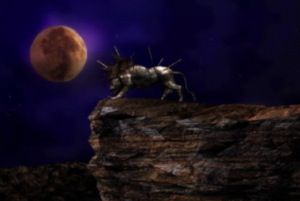 It’s hard to elaborate further without giving away key story elements and plot twists — all of which are much more enjoyable when experienced without any prior knowledge. With this in mind, the story is complex, varied and highly entertaining, the characters are — for the most part — a lot more deep and flawed than they appear on the surface, and getting invested in the story is like riding an emotional roller-coaster, never knowing what’s lying around the next corner. It’s hard not to get drawn in, and while some moments are a little marred by the less-than-stellar translation from Japanese to English, for the most part the writing is solid.
It’s hard to elaborate further without giving away key story elements and plot twists — all of which are much more enjoyable when experienced without any prior knowledge. With this in mind, the story is complex, varied and highly entertaining, the characters are — for the most part — a lot more deep and flawed than they appear on the surface, and getting invested in the story is like riding an emotional roller-coaster, never knowing what’s lying around the next corner. It’s hard not to get drawn in, and while some moments are a little marred by the less-than-stellar translation from Japanese to English, for the most part the writing is solid.
Does Final Fantasy VII live up to the hype? In my humble opinion, absolutely. The engrossing visuals, deep story, well-polished gameplay and phenomenal soundtrack all combine to create a truly unforgettable — albeit somewhat dated — experience. If you’ve never played this game before, you owe it to yourself to give it a try — there’s a lot to love here, and there’s a good reason many people consider it one of the greatest JRPGs of all time.
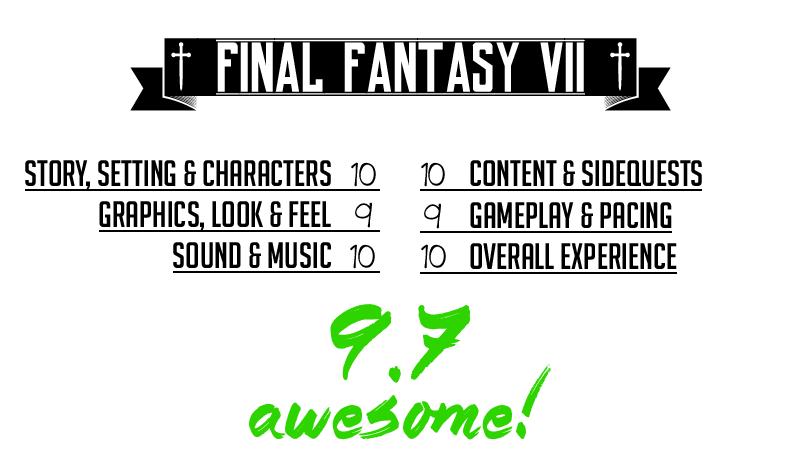
Grave's RPG Reviews
Game Boy Advance · Nintendo 2DS/3DS · PC · PlayStation · PlayStation 3
PlayStation 4 · PlayStation Portable · PlayStation Vita · RPG Maker · SNES · Switch · Wii
WiiU · Xbox 360 · Xbox One
Final Fantasy: Mystic Quest
A spin-off of the popular Final Fantasy series, released between IV and V, Final Fantasy: Mystic Quest (known in Europe as Mystic Quest: Legend) was intended to be an entry-level JRPG for Western audiences, with simplified gameplay and story to help ease gamers unfamiliar with RPGs into the genre.
Essential Information
This Review: SNES (1992)
Near-Identical Versions: Wii (2010), WiiU (2014, Japan only)
Game Length: 12-15 hours
Critic Rating: 73% aggregateThe aggregate critic rating is based on independent review scores from several other websites.
Grave’s Thoughts
Imagine all the most generic and over-used elements of the early Final Fantasy games — a world in peril, a lone hero who can save the day, a mysterious wise old man, crystals of power attuned to the elements, and an evil villain whose sole purpose in life seems to be to wreak destruction and mayhem, and wishes for naught but to end the world as we know it. That, in a nutshell, is Final Fantasy: Mystic Quest. The poor story can be forgiven to an extent since the entire intent of the game was to be something basic and entry-level, but the storyline is so thin and uninspiring that it’s hard to even care about the fate of this crappy, generic little world. And oh, generic it is — there’s a fire town near a volcano, an ice town in a snowy tundra… you get the idea.
The characters in Mystic Quest are two-dimensional set pieces at best, usually providing the hero with either a companion in battle, a way to bypass a certain obstacle, or — usually — both. Need to get through a forest with the path blocked by trees? No problem, here’s a companion with an axe! There’s absolutely no character development, and everyone becomes the hero’s best friend pretty much the very moment they meet.
I’ve intentionally chosen some of the better-looking screenshots for the sake of this review, but make no mistake: this is not a pretty game by any stretch of the imagination. The graphics are functional enough, but the layout of many areas is barren and haphazard, with almost no effort made to disguise the frankly ugly use of limited tile-sets.
The user interface follows suit, being the bare minimum of acceptable without making even the slightest effort to excel in any way whatsoever. In the case of both the UI and the game graphics themselves, the actual art in the game is decent enough, but it’s employed in such a barren and utilitarian manner that it lacks any character or personality whatsoever.
One small saving grace is that the enemy sprites in the battle system — none of which are animated, mind you — actually have several different states depending on the enemy’s current health. Regular enemies tend to only have two or three, but bosses can have up to four or five each, which is a fairly unique feature that I wish had been employed in more RPGs of the time. The more beat up an enemy becomes, the angrier and more injured they look, often in a cartoonishly amusing manner.
In terms of audio, at least, the game has some small measure of positivity. While the sound effects — much like the rest of the game — are utilitarian and adequate at best while being neither terribly offensive nor particularly noteworthy, the music is a step up from the rest of the game. Most of the game’s soundtrack is fairly decent — not up to par with other Final Fantasy titles, but certainly good quality for an RPG of its time. It does a good job filling out the game and bringing the otherwise soulless world somewhat to life, a soundtrack which would have served a superior game much better.
Of particular note, the battle theme is energetic and badass (though you may get sick of hearing it after a while — see below), and the Doom Castle theme, which plays in the last dungeon of the game, is absolutely killer. Why a soundtrack of this quality was wasted on such a weak game is beyond me.
The first hour or so of gameplay seems absolutely charming and adorably simple compared to other RPGs of the SNES era and beyond, but the feeling fades very quickly into one of tedium and frustration.
The game takes place in three main screens — the world map is a fairly linear affair where you can move from place to place on rails, unable to explore beyond the path intended. There are no random encounters, however various ‘battlefields’ are scattered across the world — these are sites where you can choose to fight a series of (usually very similar or identical) foes, and after ten victories, are awarded with either an item, some money, or a handful of experience points.
Secondly, dungeons and towns are on a rigid grid-based system — totally expected of an RPG of this era — with an unexpected action-RPG element allowing the player to interact with the environment with various weapons, such as using an axe to cut down trees or a claw to climb up walls. It’s a cute little addition which works in the game’s favour at first, though becomes somewhat tedious when faced with a huge room full of mushrooms blocking the way.
Rather than random encounters, enemy positions are fixed and visible in the world until defeated. This is both a blessing and a curse — most of the dungeons are arranged in a frustrating, labyrinthine design, so being forced to deal with random encounters while trying to find the correct path would be incredibly frustrating. On the other hand, there are generally far too many enemies blocking every critical path in the game, forcing the player into a seemingly endless stream of entirely uninteresting encounters.
Thirdly, the battle system — it’s like a blend of early Dragon Quest and Final Fantasy I, and about as simplistic and boring as the screenshots above should imply.
Given that Mystic Quest was designed as an entry-level JRPG for beginners to the genre, does it stand up to the task? Would it be a good starting point for novices interested in dipping their toes in the water?
Absolutely not. If I wanted to turn someone away from ever giving the genre a fair chance, I’d suggest they play this travesty. The gameplay is an exercise in both tedium and frustration — it’s impossible to lose, as death in battle simply results in the game asking if you’d like to try again from the start of said battle, but the over-reliance on frustrating status effects such as petrification and confusion often lead to states where the entire battle will be lost in a single turn, resulting in having to try again and hope for better luck.
The dungeons are intentionally maze-like and obnoxious to explore, with forced battles around every corner and nary a single doorway without another tedious set of foes guarding the entrance, and the gameplay is such a bizarre mix of far-too-easy and sometimes completely unfair.
Seasoned RPG veterans will gain absolutely nothing from the experience, while there are a plethora of other games more well-suited to beginners. I can appreciate what Square tried to do, and perhaps at the time of its release, it was a viable option for a novice — but not so much anymore.
